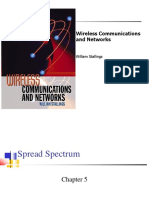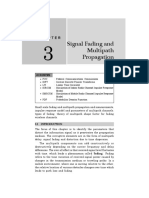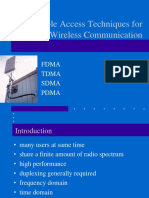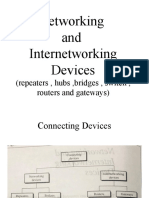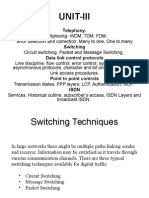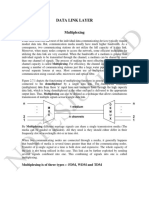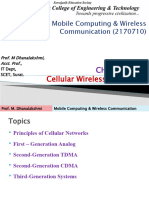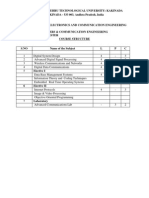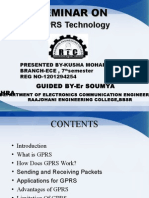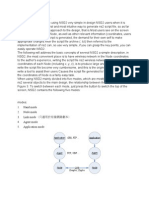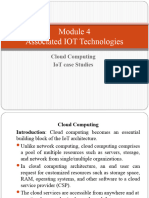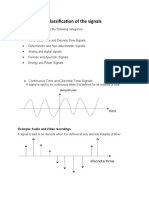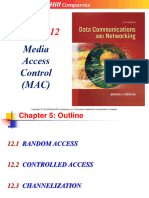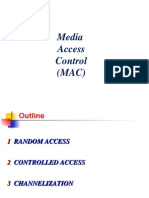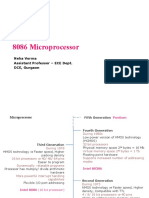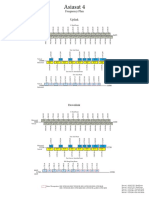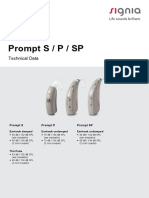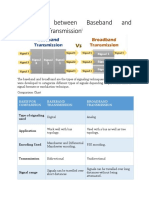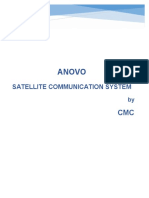100% found this document useful (1 vote)
141 views44 pagesUnit 1 - Part2 - Multiple Access
This document summarizes key topics in mobile and wireless communication, including medium access control (MAC) layer protocols, random access methods like ALOHA and carrier sensing, controlled access using reservation, polling and token passing, and channelization techniques such as FDMA, TDMA and CDMA. It includes diagrams and examples to illustrate concepts like frame collisions, vulnerable periods, and how methods like slotted ALOHA and carrier sensing improve throughput over pure ALOHA.
Uploaded by
SimranCopyright
© © All Rights Reserved
We take content rights seriously. If you suspect this is your content, claim it here.
Available Formats
Download as PPT, PDF, TXT or read online on Scribd
100% found this document useful (1 vote)
141 views44 pagesUnit 1 - Part2 - Multiple Access
This document summarizes key topics in mobile and wireless communication, including medium access control (MAC) layer protocols, random access methods like ALOHA and carrier sensing, controlled access using reservation, polling and token passing, and channelization techniques such as FDMA, TDMA and CDMA. It includes diagrams and examples to illustrate concepts like frame collisions, vulnerable periods, and how methods like slotted ALOHA and carrier sensing improve throughput over pure ALOHA.
Uploaded by
SimranCopyright
© © All Rights Reserved
We take content rights seriously. If you suspect this is your content, claim it here.
Available Formats
Download as PPT, PDF, TXT or read online on Scribd
/ 44


